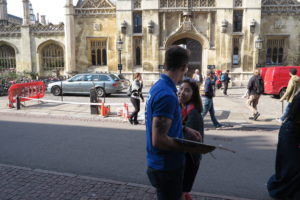 Using mainly Photoshop and Lightroom, just two of the range of packages available, Sue Fifer showed how easy post processing is in the digital age, compared with the time of silver halides and chemical baths. She described it as a ‘democratisation’ of photography, something available to all, not just those with darkroom. It can involve a steep learning curve, but it is comparatively cheap, quick, gives you control, is reversible and provides an almost limitless range of options. The trick is use only as much of the huge potential as you need to achieve the effects you want. Shoot in RAW if you want to get the best out of it.
Using mainly Photoshop and Lightroom, just two of the range of packages available, Sue Fifer showed how easy post processing is in the digital age, compared with the time of silver halides and chemical baths. She described it as a ‘democratisation’ of photography, something available to all, not just those with darkroom. It can involve a steep learning curve, but it is comparatively cheap, quick, gives you control, is reversible and provides an almost limitless range of options. The trick is use only as much of the huge potential as you need to achieve the effects you want. Shoot in RAW if you want to get the best out of it.
 Is it cheating? It can be, but doesn’t have to be and don’t blame digital technology: photography has given a partial and skewed view of reality from the day it was invented. The picture above was post processed in Lightroom using the following steps: cropping; increase ‘clarity’ (increases mid-tone contrast (‘punch’)); overall exposure increase; overall exposure increase in the shadows; selective exposure increase/decrease to shadows/lights; selective changes to colour saturation; and sharpening. The result is a better picture without reducing its integrity.
Is it cheating? It can be, but doesn’t have to be and don’t blame digital technology: photography has given a partial and skewed view of reality from the day it was invented. The picture above was post processed in Lightroom using the following steps: cropping; increase ‘clarity’ (increases mid-tone contrast (‘punch’)); overall exposure increase; overall exposure increase in the shadows; selective exposure increase/decrease to shadows/lights; selective changes to colour saturation; and sharpening. The result is a better picture without reducing its integrity.
Photo: King’s Parade, Cambridge
